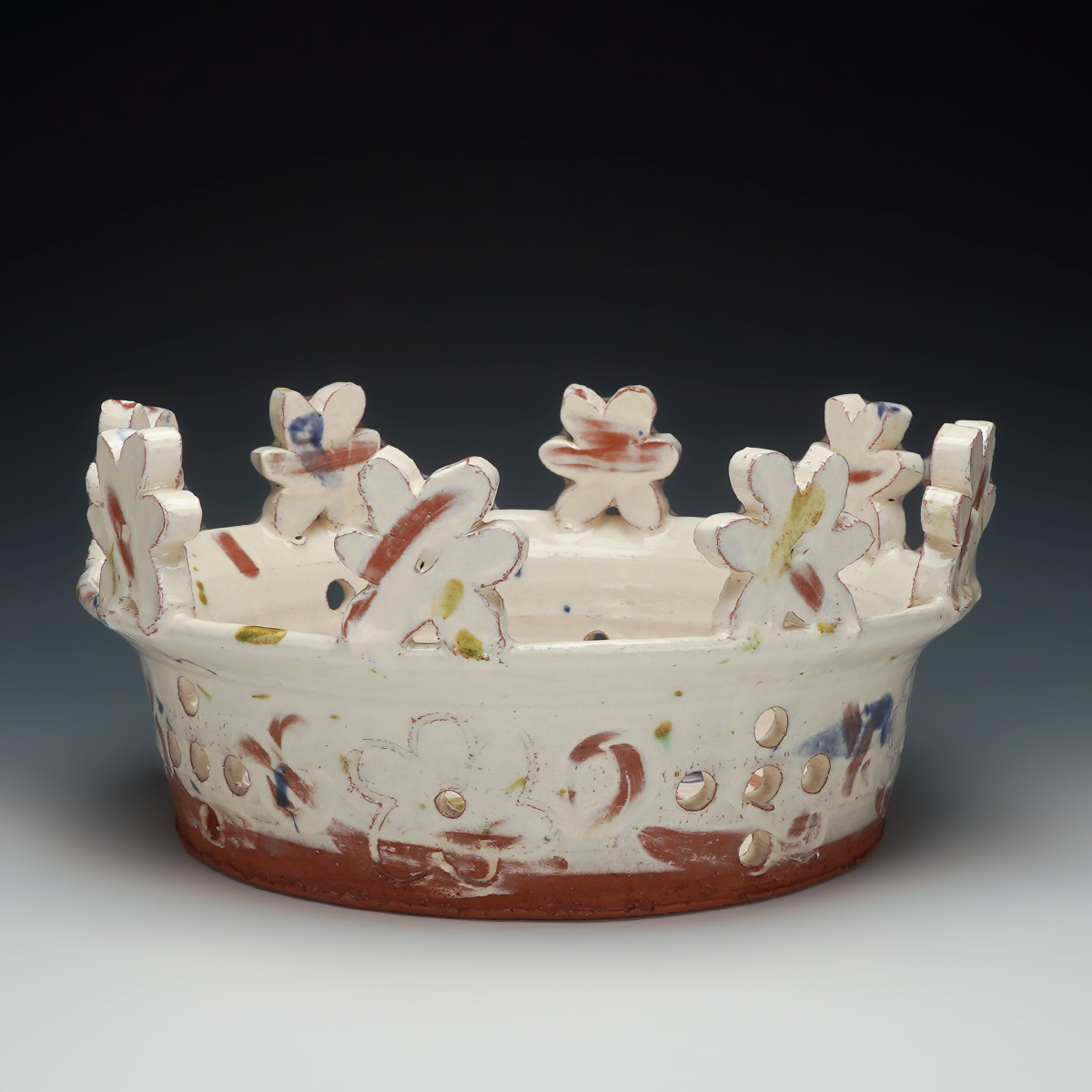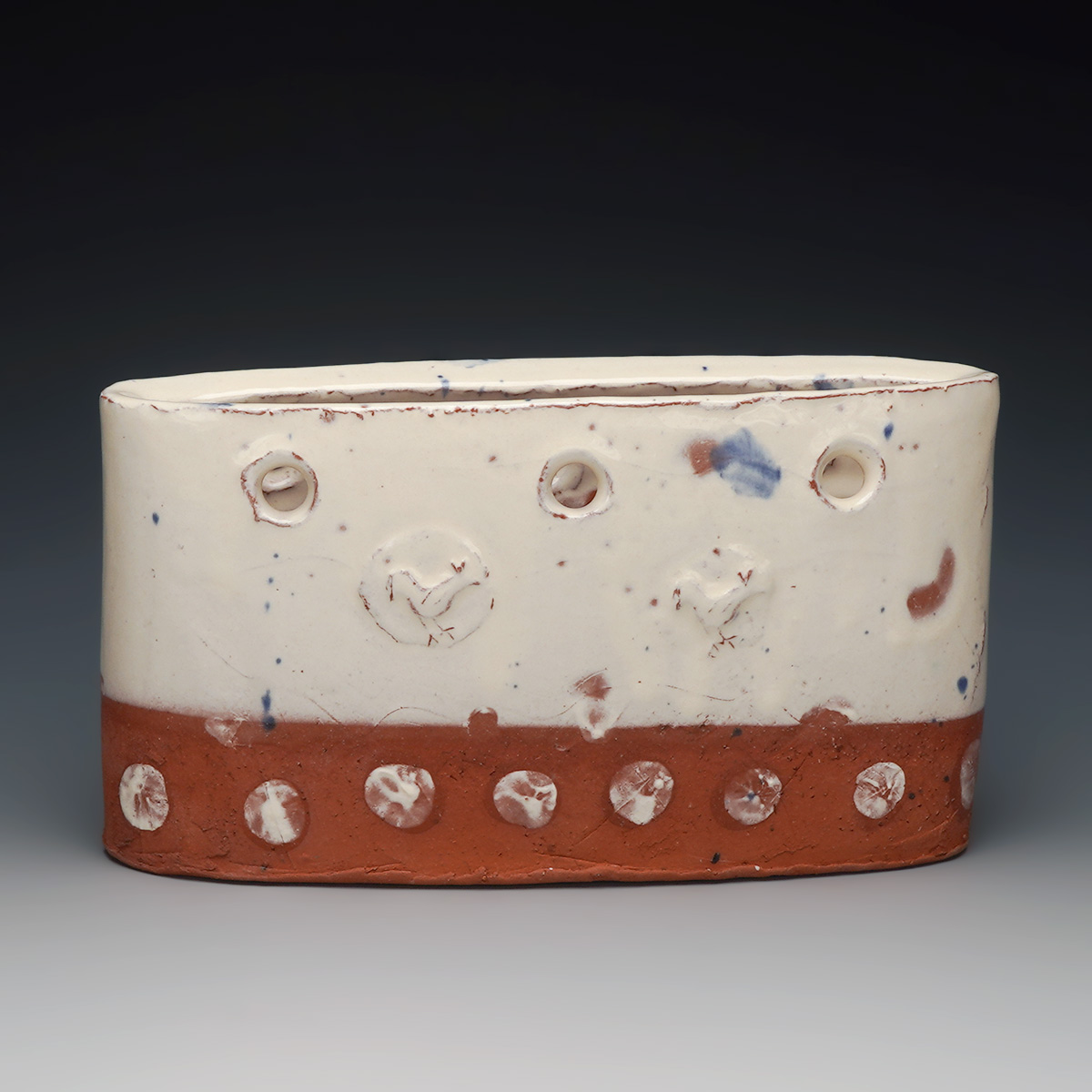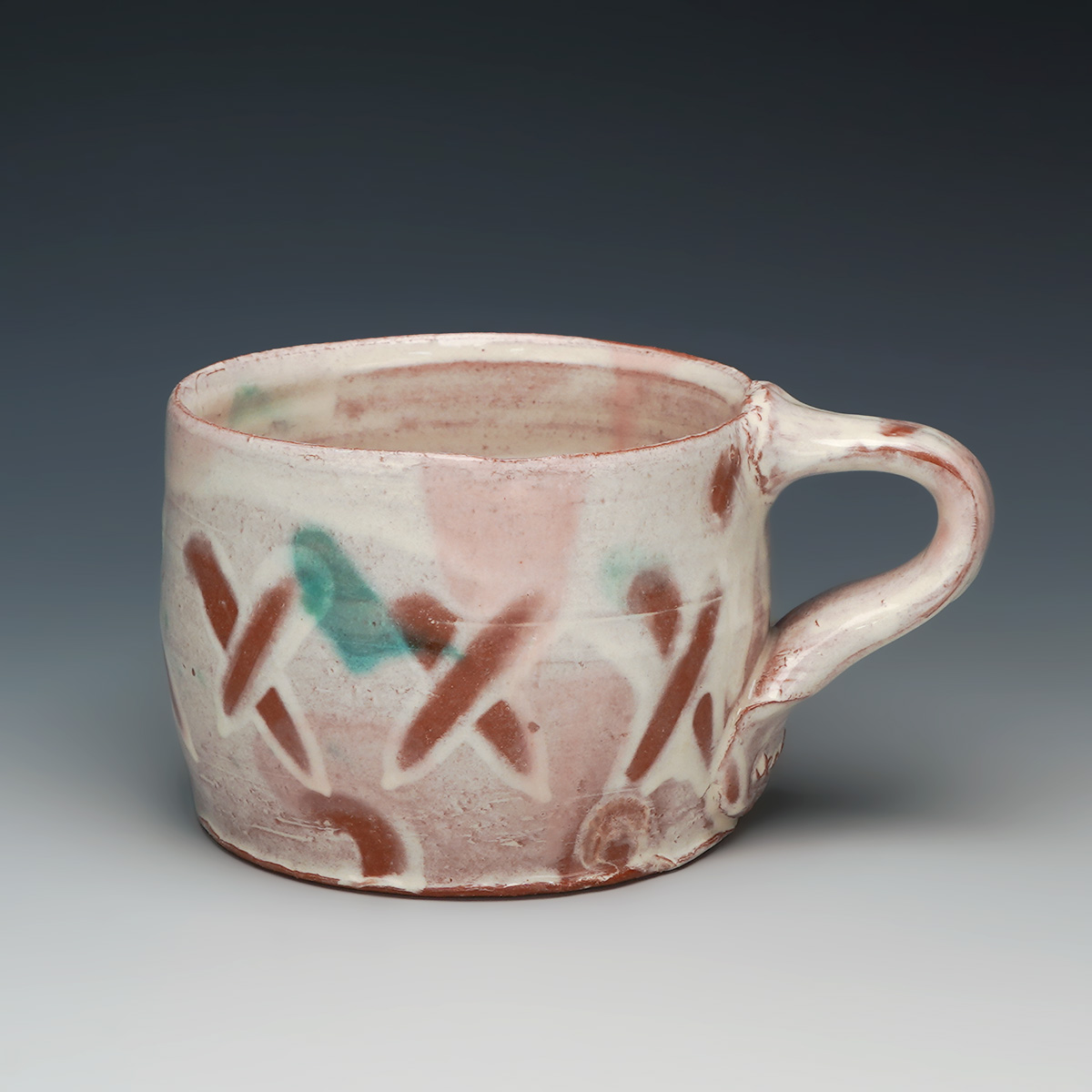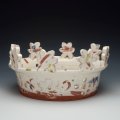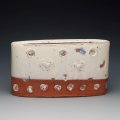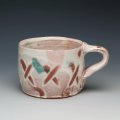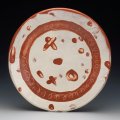
Originally from Upstate New York on the borders of Vermont and Québec, Adam received his BFA in ceramics from The School for American Crafts at Rochester Institute of Technology and received his MFA in ceramics from Ohio University in Athens, OH. He has served as a studio assistant at Penland School of Crafts in North Carolina. Additionally, he has been an instructor for Kids on Campus at both Rochester Institute of Technology, and more recently Ohio University. He has served as Studio Manager and Instructor at the Smithy Clay Studio in Cooperstown, NY. Currently, he is a K-12 Art Teacher in Central New York. He has exhibited his work nationally and locally.
His current work explores our emotional connection to objects through functional pottery, and explores how physical properties of the pottery evoke and develop connections to both past and present social gatherings around food and drink. Adam’s research has been focused on both personal locality and the regional, as well as research into other maker cultures such as earthenware potters from North Carolina, folk furniture of western Canada, and furniture from French-Canada.
Making objects, specifically pottery, allows me to enter into the practice of crafting objects that become part of someone’s intimate space. I think about how the memory and relationship I had with objects surrounding food service and preparation in my childhood home hold significant importance to this day. Interactions around the kitchen, the table, and food were and still are held in high regard in my family. I can still vividly feel the vibrating energy of our house before a meal: the senses bombarded by conversation in every room and the dense fragrance of whatever meal was being prepared. Dishes would be pulled from the cupboards and drawers en masse, and, through a diverse grouping of well-known dishes and service ware, the meal would be served like clockwork at the designated time.
I contemplate what pieces of pottery I am most drawn to make, and I realize that they are objects rooted in the service of food and drink. I feel that these particular objects and their distinct characteristics—such as color, weight, and shape—can hold importance equal to the acts of eating and socializing. These objects are a connection to my formative years, during which my appreciation for such acts and events developed, and they have held my interest in continuing the practices my family established. I believe we often overlook and dismiss the importance of everyday intimate objects, like the cups and plates from which we drink and eat.
Personal locality and the regional has been a constant consideration for me when making my work. Much like the motifs and symbols used by past communities of potters and makers outside of clay, such as furniture makers; I am interested in developing my own collection of motifs and symbols to convey a personal narrative within the pot. These marks made within the work become a way for me to pass on symbols of my own cultural identity, while creating a visual language that lives on in someone else’s life as they develop a relationship to that object.

